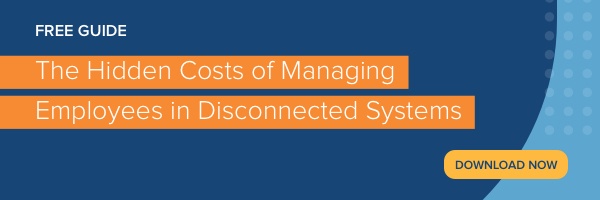
First enacted in 1938 and revised several times since then, the Fair Labor Standards Act (FLSA) is the federal authority for employee working hours and pay standards. The FLSA sets work standards such as the 40-hour workweek and the federal minimum wage, but it is most known for setting overtime pay requirements.
Understanding whether to classify your employees as FLSA exempt or non-exempt is key to keeping your pay practices fair and compliant. Here’s what you need to know to understand FLSA status and how to classify employees:
What Is FLSA Status?
The overarching benefit of the FLSA is to make sure employees are not denied pay for the hours they work in excess of 40 hours a week. Those excess hours must be compensated at one and a half times their regular pay. To make sure eligible employees receive all owed overtime pay, they are classified as either non-exempt (eligible for overtime pay) or exempt (not eligible for overtime pay).
How you classify employees has legal and financial implications for your organization. The FLSA is enforced by the Wage and Hour Division of the Department of Labor (DOL), which has the authority to recover back wages and levy penalties of up to $1,000 per FLSA violation. In 2020, the DOL recovered an average of $706,000 per day in back pay for misclassified employees.
How to Classify Employees by FLSA Status
Although the Department of Labor’s guidance for classifying employees as exempt or non-exempt is fairly straightforward, actually classifying employees is not always easy, in large part, because there are several questions you need to answer to make a determination. FLSA status is not driven by the person in the position, but rather, the position itself. As a result, an employee can perform exempt and non-exempt positions throughout a career.
Update: As of July 1, 2024 changes have been implemented to the Fair Labor Standards Act. For most up to date information, visit the Department of Labor website or schedule a consultation with Fuse.
To classify an employee’s FLSA status, you must answer three questions covering the following areas:
- Salary basis: Does the employee earn a salary?
- Salary level: How much does the employee earn per week or year?
- Duties performed: Does the employee’s role require certain responsibilities or functions that the Department of Labor considers exempt duties?
Although there are a few exceptions, employees must meet a certain threshold based on all of the above questions to be considered exempt from FLSA coverage. To be considered FLSA exempt, all of the below must be true for an employee:
- The employee receives pay on a salary basis (rather than hourly).
- The employee earns at least $35,568 per year, or $684 per week.
- The employee performs exempt job duties.
Here is how you use the above criteria to determine an employee’s FLSA classification:
Salary Basis
Instead of earning an hourly wage, salaried employees are paid a salary regardless of variation in their work schedule in a given week. Employees who are paid a salary and satisfy the salary level and duties performed requirements can be classified as FLSA exempt.
Salary Level
Per a new overtime rule that went into effect in January 2020, employees with earnings below the FLSA threshold of $35,568 per year ($684 per week) must be classified as non-exempt. Employees with earnings above this threshold may be classified as exempt or non-exempt, depending on their salary basis and duties performed. The salary used to determine overtime eligibility can include up to 10 percent paid in the form of non-discretionary bonuses or commissions.
Duties Performed
Job title does not determine whether a position is exempt or non-exempt, but the nature of the duties performed plays a role. In general, the Department of Labor considers certain positions to be exempt, for example, executives, administrators, and other professional positions requiring specific degrees or skills.
Three core exemption levels can result in a position being classified as exempt:
1. FLSA Executive Exemption
Employees are considered exempt if they satisfy the following criteria:
- Regularly supervise two or more full-time employees
- Have people management as a primary job duty
- Have input into others’ employment, for example, hiring, promoting, and termination
2. FLSA Learned Professional Exemption
Employees are considered exempt if they possess the following professional capabilities:
- Consistent exercise of judgment and discretion in performing their work
- Advanced knowledge in fields such as law, medicine, accounting, or other skilled trades
- Advanced knowledge acquired by a prolonged course of specialized instruction
- A job requirement to analyze, interpret, or make deductions from varying facts or circumstances
3. FLSA Administrative Exemption
Employees are considered exempt if they perform the following primary duties:
- Office or non-manual work directly related to business operations or management
- Use of judgment and discretion in performing work duties
- Support of production or line employees to keep the business running, without engaging in the production or sales of the actual product or service of the business
Tips for Managing the Classification Process
Determining whether employees should be classified as non-exempt or exempt is easier when you benefit from resources and expert advice to guide your decision-making. Take these steps to classify employees correctly:
- Consider all classification criteria: Classifying employees based on salary or job duties alone can lead to costly errors. Take the time to consider each new hire’s FLSA classification using the required criteria, and reassess each time an employee is promoted or changes roles.
- Use available compliance tools: Resources, such as a worksheet designed specifically for FLSA classifications, can walk you through the classification process step-by-step.
- Use integrated technology to track and pay overtime accurately: An integrated workforce management solution helps you track employee regular and overtime hours and stay in compliance with a range of applicable labor laws.
Manage Employee Overtime with an Integrated System
Tools for classifying employees as exempt or non-exempt can take the guesswork out of determining employee FLSA status. Moreover, you can boost your FLSA compliance even further by pulling together your time tracking and payroll systems into one platform.
As your all-in-one workforce management solution, an integrated payroll system allows you to manage employee FLSA classifications, working hours, and payroll together, rather than with a complicated patchwork of HR and payroll systems. To learn more about how an integrated solution can help you manage your workforce more efficiently, read our e-book, The Hidden Costs of Managing Employees in Disconnected Systems.

